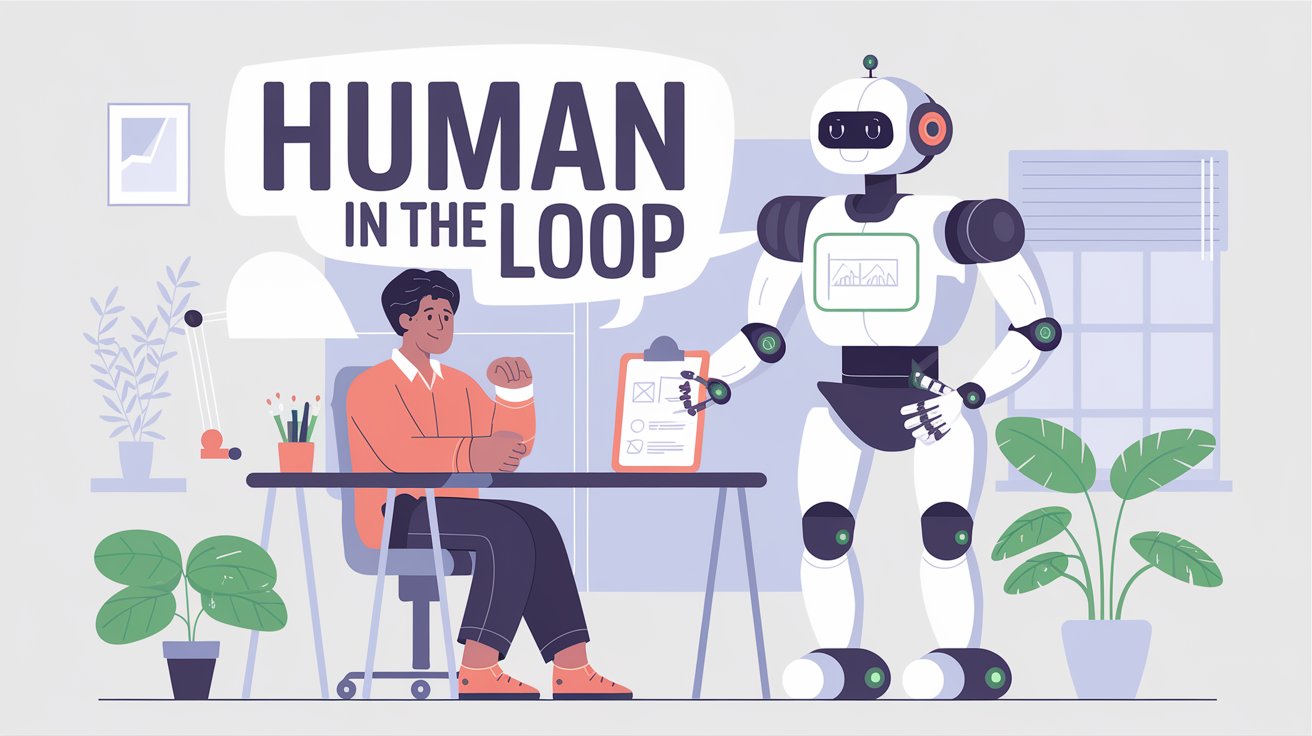Memory plays a vital role in any workflow within LangGraph, as it enables tailored outputs based on the conversation’s history. To support this functionality, LangGraph offers both short-term and long-term memory options. In this article, we will guide you through enhancing LangGraph with long-term memory to improve AI performance and create more personalized interactions.
What is long-term memory

As the name suggests, Long term memory is used to store the information for a long duration. Unlike short-term memory in LangGraph, long-term memory is accessible across the threads.
That’s why long-term memory is also called across-thread memory.
There are three main components in long-term memory:
namespace: The namespace for the object, a tuple (similar to directories)
key: the object key (similar to filenames)
value: the object value (similar to file contents)
long-term memory implementation
Let’s see how you can implement long-term memory. First import and initialize InMemoryStore which is used for storing long-term memory.
from langgraph.store.memory import InMemoryStore in_memory_store = InMemoryStore()
We use the put method to save an object to the store by namespace and key. Here we also used uuid package to generate unique key for the key.
# Namespace for the memory to save
user_id = "1"
namespace_for_memory = (user_id, "memories")
# Save a memory to namespace as key and value
key = str(uuid.uuid4())
# The value needs to be a dictionary
value = {"food_preference" : "I like pizza"}
# Save the memory
in_memory_store.put(namespace_for_memory, key, value)
We use search to retrieve objects from the store by namespace. And this will return list of all stored keys in the given namespace.
memories = in_memory_store.search(namespace_for_memory)
---Output---
['{'value': {'food_preference': 'I like pizza'},
'key': 'a754b8c5-e8b7-40ec-834b-c426a9a7c7cc',
'namespace': ['1', 'memories'],
'created_at': '2024-11-04T22:48:16.727572+00:00',
'updated_at': '2024-11-04T22:48:16.727574+00:00'}']
We can also use get to retrieve an object by namespace and key.
# Get the memory by namespace and key
memory = in_memory_store.get(namespace_for_memory, key)
memory.dict()
--OUTPUT
{'value': {'food_preference': 'I like pizza'},
'key': 'a754b8c5-e8b7-40ec-834b-c426a9a7c7cc',
'namespace': ['1', 'memories'],
'created_at': '2024-11-04T22:48:16.727572+00:00',
'updated_at': '2024-11-04T22:48:16.727574+00:00'}
Chatbot with Long term memory
Let’s see this in action by creating Chatbot. We want a chatbot that has two types of memory:
Short-term (within-thread) memory: Chatbot can persist conversational history and / or allow interruptions in a chat session.Long-term (cross-thread) memory: Chatbot can remember information about a specific user across all chat sessions.
For short term memory, we will use checkpointer. And for long-term memory we will use InMemoryStore as introduced above.
from IPython.display import Image, display
from langgraph.checkpoint.memory import MemorySaver
from langgraph.graph import StateGraph, MessagesState, START, END
from langgraph.store.base import BaseStore
from langchain_openai import ChatOpenAI
from langchain_core.messages import HumanMessage, SystemMessage
from langchain_core.runnables.config import RunnableConfig
model = ChatOpenAI()
# Chatbot instruction
MODEL_SYSTEM_MESSAGE = """You are a helpful assistant with memory that provides information about the user.
If you have memory for this user, use it to personalize your responses.
Here is the memory (it may be empty): {memory}"""
# Create new memory from the chat history and any existing memory
CREATE_MEMORY_INSTRUCTION = """You are collecting information about the user to personalize your responses.
CURRENT USER INFORMATION:
{memory}
INSTRUCTIONS:
1. Review the chat history below carefully
2. Identify new information about the user, such as:
- Personal details (name, location)
- Preferences (likes, dislikes)
- Interests and hobbies
- Past experiences
- Goals or future plans
3. Merge any new information with existing memory
4. Format the memory as a clear, bulleted list
5. If new information conflicts with existing memory, keep the most recent version
Remember: Only include factual information directly stated by the user. Do not make assumptions or inferences.
Based on the chat history below, please update the user information:"""
def call_model(state: MessagesState, config: RunnableConfig, store: BaseStore):
"""Load memory from the store and use it to personalize the chatbot's response."""
# Get the user ID from the config
user_id = config["configurable"]["user_id"]
# Retrieve memory from the store
namespace = ("memory", user_id)
key = "user_memory"
existing_memory = store.get(namespace, key)
# Extract the actual memory content if it exists and add a prefix
if existing_memory:
# Value is a dictionary with a memory key
existing_memory_content = existing_memory.value.get('memory')
else:
existing_memory_content = "No existing memory found."
# Format the memory in the system prompt
system_msg = MODEL_SYSTEM_MESSAGE.format(memory=existing_memory_content)
# Respond using memory as well as the chat history
response = model.invoke([SystemMessage(content=system_msg)]+state["messages"])
return {"messages": response}
def write_memory(state: MessagesState, config: RunnableConfig, store: BaseStore):
"""Reflect on the chat history and save a memory to the store."""
# Get the user ID from the config
user_id = config["configurable"]["user_id"]
# Retrieve existing memory from the store
namespace = ("memory", user_id)
existing_memory = store.get(namespace, "user_memory")
# Extract the memory
if existing_memory:
existing_memory_content = existing_memory.value.get('memory')
else:
existing_memory_content = "No existing memory found."
# Format the memory in the system prompt
system_msg = CREATE_MEMORY_INSTRUCTION.format(memory=existing_memory_content)
new_memory = model.invoke([SystemMessage(content=system_msg)]+state['messages'])
# Overwrite the existing memory in the store
key = "user_memory"
# Write value as a dictionary with a memory key
store.put(namespace, key, {"memory": new_memory.content})
# Define the graph
builder = StateGraph(MessagesState)
builder.add_node("call_model", call_model)
builder.add_node("write_memory", write_memory)
builder.add_edge(START, "call_model")
builder.add_edge("call_model", "write_memory")
builder.add_edge("write_memory", END)
# Store for long-term (across-thread) memory
across_thread_memory = InMemoryStore()
# Checkpointer for short-term (within-thread) memory
within_thread_memory = MemorySaver()
# Compile the graph with the checkpointer fir and store
graph = builder.compile(checkpointer=within_thread_memory, store=across_thread_memory)
# View
display(Image(graph.get_graph(xray=1).draw_mermaid_png()))

When we interact with the chatbot, we supply two things:
Short-term (within-thread) memory: Athread IDfor persisting the chat history.Long-term (cross-thread) memory: Auser IDto namespace long-term memories to the user.
Let’s see how these work together in practice.
config = {"configurable": {"thread_id": "1", "user_id": "1"}}
# User input
input_messages = [HumanMessage(content="Hi, my name is Kathan.")]
# Run the graph
for chunk in graph.stream({"messages": input_messages}, config, stream_mode="values"):
chunk["messages"][-1].pretty_print()
---OUTPUT---
================================ Human Message =================================
Hi, my name is Kathan
================================== Ai Message ==================================
Hello, Kathan! It's nice to meet you. How can I assist you today?
# Get user input
input_messages = [HumanMessage(content="I like to bike around San Francisco")]
# Run Graph
for chunk in graph.stream({"messages": input_messages}, config, stream_mode="values"):
chunk["messages"][-1].pretty_print()
---OUTPUT----
================================ Human Message =================================
I like to bike around San Francisco
================================== Ai Message ==================================
That sounds like a great way to explore the city, Kathan! San Francisco has some beautiful routes and views. Do you have a favorite trail or area you like to bike in?
Above we have used the MemorySaver to store the memory within the thread. Let’s see that what it has stored.
thread = {"configurable": {"thread_id": "1"}}
state = graph.get_state(thread).values
for m in state["messages"]:
m.pretty_print()
---Output---
================================ Human Message =================================
Hi, my name is Kathan
================================== Ai Message ==================================
Hello, Kathan! It's nice to meet you. How can I assist you today?
================================ Human Message =================================
I like to bike around San Francisco
================================== Ai Message ==================================
That sounds like a great way to explore the city, Kathan! San Francisco has some beautiful routes and views. Do you have a favorite trail or area you like to bike in?
That’s great! Now let’s also see the if the memory is stored in the store.
# Namespace for the memory to save
user_id = "1"
namespace = ("memory", user_id)
existing_memory = across_thread_memory.get(namespace, "user_memory")
existing_memory.dict()
---OUTPUT---
'value': {'memory': "**Updated User Information:**\\n- User's name is Kathan.\\n- Likes to bike around San Francisco."},
'key': 'user_memory',
'namespace': ['memory', '1'],
'created_at': '2025-01-05T00:12:17.383918+00:00',
'updated_at': '2024-01-05T00:12:25.469528+00:00'}
Now let’s see the same by passing another thread and same user_id to see if the stored long-term memory is accessible with different thread.
# We supply a user ID for across-thread memory as well as a new thread ID
config = {"configurable": {"thread_id": "2", "user_id": "1"}}
# User input
input_messages = [HumanMessage(content="Hi! Where would you recommend that I go biking?")]
# Run the graph
for chunk in graph.stream({"messages": input_messages}, config, stream_mode="values"):
chunk["messages"][-1].pretty_print()
---OUTPUT---
================================ Human Message =================================
Hi! Where would you recommend that I go biking?
================================== Ai Message ==================================
Hi Kathan! Since you enjoy biking around San Francisco, there are some fantastic routes you might love. Here are a few recommendations:
1. **Golden Gate Park**: This is a classic choice with plenty of trails and beautiful scenery. You can explore the park's many attractions, like the Conservatory of Flowers and the Japanese Tea Garden.
2. **The Embarcadero**: A ride along the Embarcadero offers stunning views of the Bay Bridge and the waterfront. It's a great way to experience the city's vibrant atmosphere.
3. **Marin Headlands**: If you're up for a bit of a challenge, biking across the Golden Gate Bridge to the Marin Headlands offers breathtaking views of the city and the Pacific Ocean.
4. **Presidio**: This area has a network of trails with varying difficulty levels, and you can enjoy views of the Golden Gate Bridge and the bay.
5. **Twin Peaks**: For a more challenging ride, head up to Twin Peaks. The climb is worth it for the panoramic views of the city.
Let me know if you want more details on any of these routes!
input_messages = [HumanMessage(content="Great, are there any bakeries nearby that I can check out? I like a croissant after biking.")]
# Run the graph
for chunk in graph.stream({"messages": input_messages}, config, stream_mode="values"):
chunk["messages"][-1].pretty_print()
---OUTPUT---
================================ Human Message =================================
Great, are there any bakeries nearby that I can check out? I like a croissant after biking.
================================== Ai Message ==================================
Absolutely, Lance! Here are a few bakeries in San Francisco where you can enjoy a delicious croissant after your ride:
1. **Tartine Bakery**: Located in the Mission District, Tartine is famous for its pastries, and their croissants are a must-try.
2. **Arsicault Bakery**: This bakery in the Richmond District has been praised for its buttery, flaky croissants. It's a bit of a detour, but worth it!
3. **b. Patisserie**: Situated in Lower Pacific Heights, b. Patisserie offers a variety of pastries, and their croissants are particularly popular.
4. **Le Marais Bakery**: With locations in the Marina and Castro, Le Marais offers a charming French bakery experience with excellent croissants.
5. **Neighbor Bakehouse**: Located in the Dogpatch, this bakery is known for its creative pastries, including some fantastic croissants.
These spots should provide a delightful treat after your biking adventures. Enjoy your ride and your croissant!
Voila! it’s accessible with the different thread. That’s how you can store the long context information with the long-term memory.
Conclusion
As you saw above, LangGraph’s InMemoryStore is good for storing long conversations that we want to retrieve across the thread. This give extra flexibility compared to MemorySaver .
This chatbot example works great if you’re looking to store unstructured data in MemoryStore. However, if you need to store structured information, using a JSON schema is the way to go! For this Trustcall library is best choice. Click here to know how you can do it.



